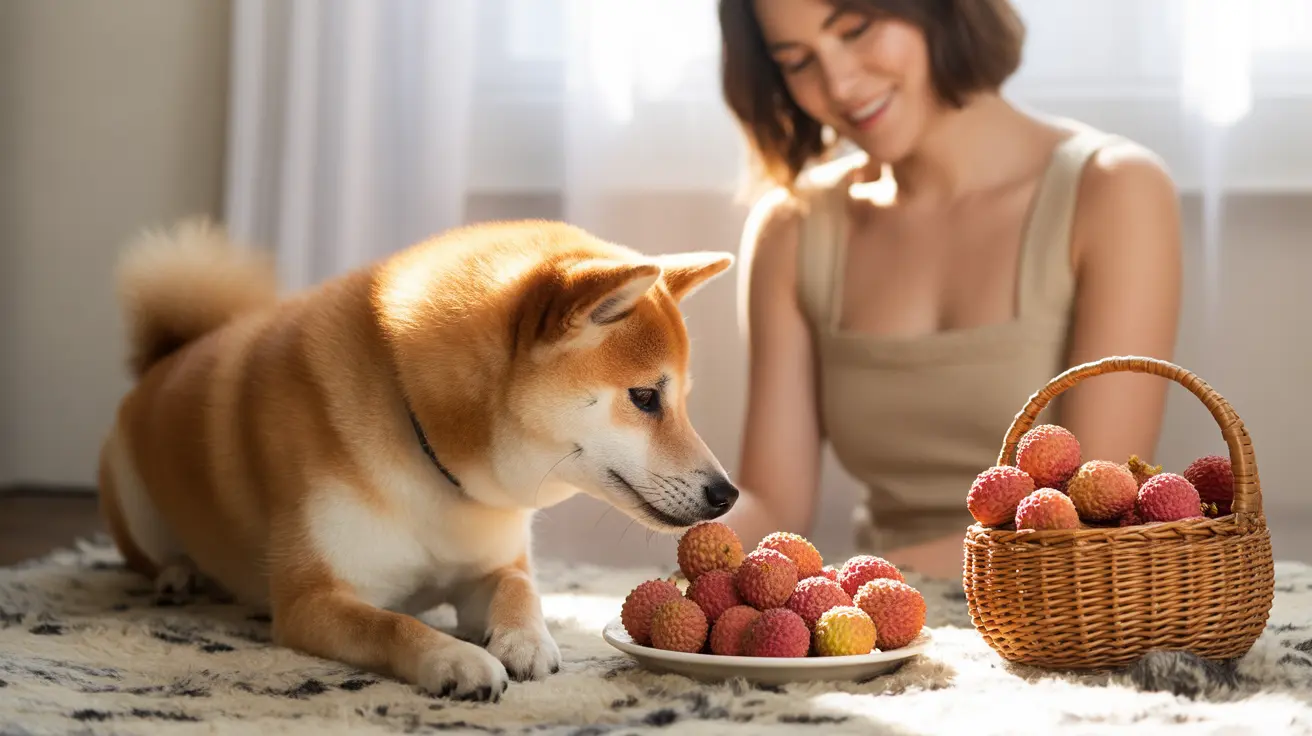Understanding Lychee and Its Components
Lychee is a tropical fruit consisting of three distinct parts: the outer skin (rind), the fleshy pulp, and the seed. While the flesh may seem harmless, each component carries different risks for dogs:
- The flesh contains high sugar content and can be safe in minimal amounts when ripe
- The skin is indigestible and poses a choking hazard
- The seed contains toxic compounds and can cause intestinal blockages
The Dangers of Unripe Lychee
One of the most serious concerns with lychee is the toxicity of unripe fruit. Unripe lychees contain dangerous compounds called hypoglycin A and MCPG (methylene cyclopropyl-glycine), which can cause severe health problems in dogs:
- Dramatic drops in blood sugar levels
- Seizures and neurological issues
- Potential organ failure
- In severe cases, death
Safe Consumption Guidelines
If you're considering offering lychee to your dog, follow these strict guidelines:
- Only use fully ripened lychee
- Remove all skin and seeds completely
- Offer tiny amounts as an occasional treat
- Monitor your dog for any adverse reactions
- Consult your veterinarian before introducing any new foods
Signs of Lychee Toxicity in Dogs
Being able to recognize symptoms of lychee poisoning could save your dog's life. Watch for:
- Vomiting and diarrhea
- Lethargy or weakness
- Excessive drooling
- Muscle tremors or seizures
- Changes in behavior or coordination
- Dark-colored urine
Healthier Alternatives to Lychee
Instead of risking lychee consumption, consider these safer fruit options for your dog:
- Apples (without seeds)
- Bananas
- Watermelon (seedless)
- Blueberries
- Dragon fruit
Frequently Asked Questions
Can dogs safely eat lychee fruit, and which parts should be avoided?
Dogs can eat small amounts of ripe lychee flesh only. The skin and seeds must always be avoided as they pose serious health risks including choking hazards and toxicity.
What health risks are associated with dogs eating unripe lychee or lychee seeds?
Unripe lychee and seeds contain toxic compounds that can cause severe hypoglycemia, seizures, and potentially death. Seeds also present choking and blockage risks.
How much ripe lychee is safe to give my dog as a treat?
If approved by your veterinarian, only offer a small piece of ripe lychee flesh (about the size of a thumbnail) occasionally. Many experts recommend avoiding it altogether.
What symptoms indicate lychee poisoning in dogs, and when should I see a vet?
Signs include vomiting, diarrhea, weakness, seizures, and dark urine. Seek immediate veterinary care if your dog shows any of these symptoms after consuming lychee.
Are there safer tropical fruit alternatives to lychee for my dog?
Yes, dragon fruit is a safer tropical alternative. Other safe options include small amounts of mango flesh (without pit or skin) and papaya (without seeds).
Conclusion
While dogs can technically eat small amounts of ripe lychee flesh, the significant risks associated with this fruit make it an inadvisable treat choice. Between the dangers of toxicity from unripe fruit, choking hazards from seeds and skin, and the high sugar content, it's better to choose from the many safer fruit alternatives available. Always prioritize your dog's safety and consult with your veterinarian before introducing any new foods to their diet.






